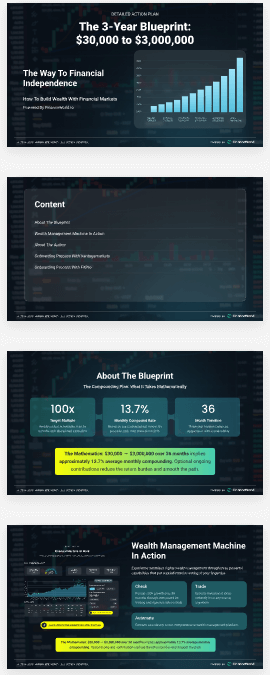Table of Contents
ToggleAnalyzing Forex Charts: Techniques for Accurate Predictions
Introduction
In the realm of financial trading, analyzing forex charts is one of the most vital skills investors can possess. Whether you are a seasoned trader or entering forex for the first time, understanding how to interpret these charts effectively can be the difference between success and failure. The global forex market operates 24 hours a day, presenting numerous opportunities for traders to capitalize on price movements and volatility. As today’s forex market becomes increasingly accessible due to technology, knowing how to analyze charts has never been more significant.
In this comprehensive article, we will delve into the essential techniques for accurately predicting market movements by analyzing forex charts effectively. From understanding chart types to technical indicators, we will equip you with the knowledge necessary to navigate the forex landscape confidently.
Understanding Forex Charts: Types and Importance
Forex charts are visual representations of currency pair price movements over a specific period. They serve as an indispensable tool for traders, enabling them to make informed decisions. Below, we explore various types of forex charts:
1. Line Charts
Line charts are one of the simplest forms of charting. They plot a currency pair’s closing prices over time, creating a continuous line. This type of chart is ideal for beginners as it provides a clear view of price trends without the distraction of fluctuating prices.
Benefits of Line Charts:
- Simplicity: They present a clear overview of price direction.
- Easy to interpret: Suitable for quick assessments.
2. Bar Charts
Bar charts offer more detail than line charts by displaying the open, high, low, and close (OHLC) for each time period. Each ‘bar’ represents this information visually, allowing traders to analyze activity over shorter intervals.
Benefits of Bar Charts:
- Detailed information: Traders can see price fluctuations and ranges.
- Better for assessing volatility: Provides insights into price movement.
3. Candlestick Charts
Candlestick charts are the most popular among forex traders. Each candlestick represents the same OHLC data but adds more visual appeal and clarity. Candlesticks can also be colored to indicate price movement direction—typically green (or white) for bullish and red (or black) for bearish.
Benefits of Candlestick Charts:
- Intuitive patterns: They often reveal trader sentiment and potential reversals.
- Rich in data: Can provide insights into overbought or oversold conditions.
The Importance of Analyzing Forex Charts
By utilizing forex charts, traders can visualize price trends and formations, which can aid in making informed trading decisions. Here are the main reasons why analyzing forex charts is essential:
- Identifying Trends: Chart analysis helps in recognizing ongoing trends that may indicate future price movements.
- Support and Resistance Levels: Analyzing historical price data enables traders to identify critical support and resistance levels, assisting in setting stop-loss and take-profit points.
- Market Sentiment: Charts can provide insights into trader sentiment that may influence price movements.
Techniques for Accurate Predictions Using Forex Charts
Now, we will explore various techniques and tools that traders use to analyze forex charts effectively. Each technique will be elaborated with practical examples and applications.
1. Trend Analysis
Trend analysis is the process of determining the general direction in which the market is moving. Trends can be upward, downward, or sideways. Recognizing the trend allows traders to position themselves advantageously.
Identifying Trends:
- Uptrends are characterized by higher highs and higher lows. Traders look for bullish signals to enter long positions.
- Downtrends show lower lows and lower highs. Here, traders may seek bearish signals to enter short positions.
- Sideways trends occur when prices move within a defined range. During such periods, traders often employ range trading strategies.
Example:
Suppose a trader observes that GBP/USD has consistently made higher highs. They could interpret this as a sign to enter a buy position, expecting the trend to continue.
2. Support and Resistance Levels
Support and resistance levels serve as psychological barriers where price reversals frequently occur. Understanding these levels can help traders make informed decisions about entry and exit points.
How to Identify:
- Support levels are formed when buying pressure prevents prices from declining further.
- Resistance levels emerge when selling pressure prevents prices from increasing.
Traders typically combine multiple indicators to confirm these levels, such as moving averages or Fibonacci retracement levels.
Example:
If EUR/USD is approaching a significant support level at 1.2000, a trader might choose to place a buy order slightly above this level, anticipating a rebound.
3. Using Technical Indicators
Technical indicators are statistical calculations based on historical price movements. They help traders identify trends and make predictions. Some popular indicators include:
1. Moving Averages
Moving averages help smooth out price data to identify trends over a specified period. Common variations include the Simple Moving Average (SMA) and the Exponential Moving Average (EMA).
Applications:
- Crossover strategies: Traders often look for crossovers between short-term and long-term moving averages to signal potential entries or exits.
2. Relative Strength Index (RSI)
The RSI is a momentum oscillator that measures the speed and change of price movements. It ranges from 0 to 100 and typically indicates whether an asset is overbought or oversold.
Applications:
- An RSI above 70 typically signals overbought conditions, while an RSI below 30 indicates oversold conditions.
4. Chart Patterns
Understanding chart patterns is essential for predicting market behavior. Traders often rely on the following common formations:
1. Head and Shoulders
The head and shoulders pattern signifies potential trend reversals. It appears at market tops (head and shoulders top) or bottoms (inverse head and shoulders).
2. Double Top and Double Bottom
The double top and double bottom patterns signal potential reversals. A double top indicates bearish reversal, while a double bottom indicates a bullish reversal.
5. Candlestick Patterns
Analyzing candlestick patterns can provide further insights. Patterns such as doji, engulfing, and pin bars each reveal trader sentiment and can indicate potential market reversals or continuations.
Example:
A bullish engulfing pattern may suggest a strong buying interest in a currency pair, prompting traders to consider long positions.
6. Volume Analysis
Volume is a crucial aspect that many traders overlook. Analyzing the volume alongside price movements can provide insights into the strength of a price move.
Using Volume:
- Higher volume during price increases could confirm the strength of an upward trend.
- Conversely, declining volume during price increases may signal potential weakness in the trend.
Practical Tips to Enhance Forex Chart Analysis
To help you apply the above techniques effectively, here are some practical tips:
- Consistent Practice: Spend time analyzing historical charts to familiarize yourself with how trends, support and resistance levels, and patterns form.
- Multiple Time Frame Analysis: Use different time frames to gain diverse perspectives. A daily chart may show a long-term trend, while an hourly chart can indicate short-term opportunities.
- Stay Informed: Combine technical analysis with fundamental analysis. News events can drastically influence currency prices, and staying updated can enhance prediction accuracy.
- Using Trading Tools: Leverage trading tools or platforms that offer advanced charting capabilities to enhance your analysis experience. Investing in a reliable trading platform can significantly help.
- Utilize Automated Trading: Consider utilizing automated trading systems or copy trading to augment your strategies.
Conclusion and Key Takeaways
In summary, analyzing forex charts is an invaluable skill in the world of trading. Utilizing techniques such as trend analysis, support and resistance identification, applying technical indicators, understanding chart and candlestick patterns, and incorporating volume analysis can effectively enhance your trading outcomes.
By embracing these strategies and continuously practicing your skills, you will be well-equipped to navigate the complexities of the forex market confidently.
Are you ready to jumpstart your forex trading journey? Explore more resources, including trading signals and hedge funds, available on FinanceWorld.io.
If you enjoyed this article and found it helpful, please take a moment to rate it! Your feedback is invaluable.
Discover the potential for greater success in forex trading today!



